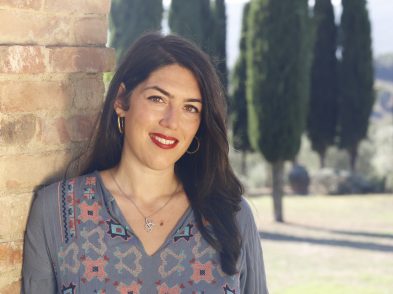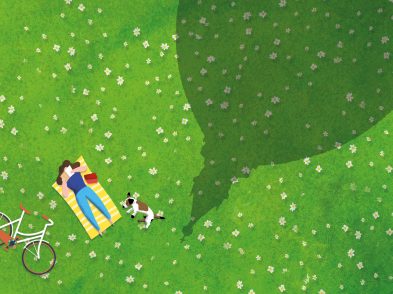Tucked away on a nondescript industrial estate in the town of Pontassieve, 20 kilometres east of Florence, lies a multigenerational treasure trove of dazzling craftsmanship. Bianco Bianchi advances the ancient art of scagliola, a beguiling artistic inlay technique applied to decorative surfaces.
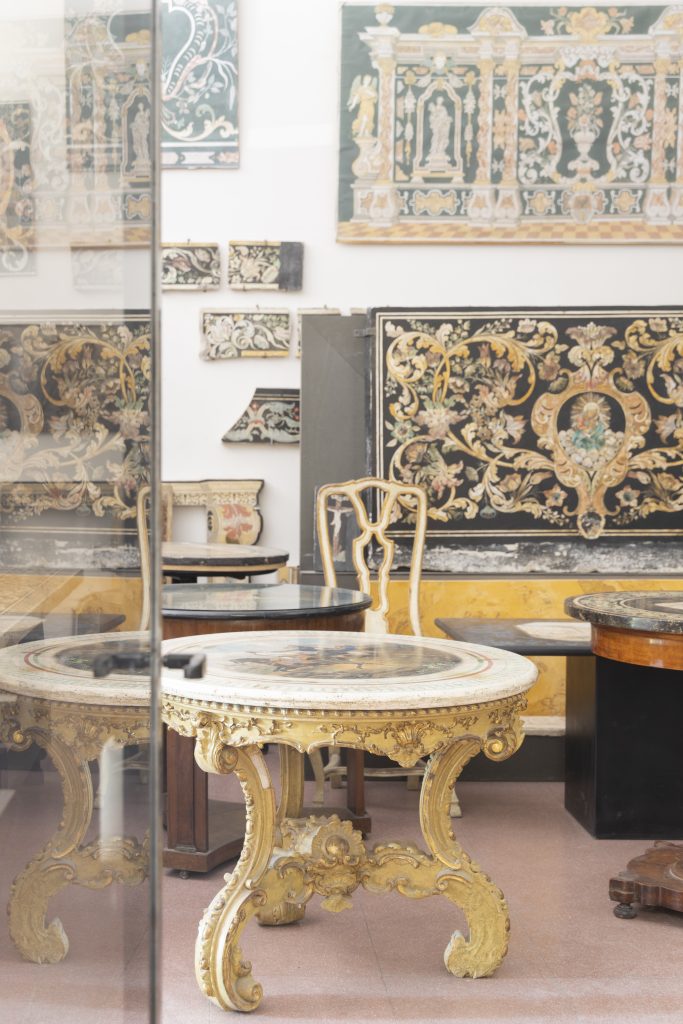
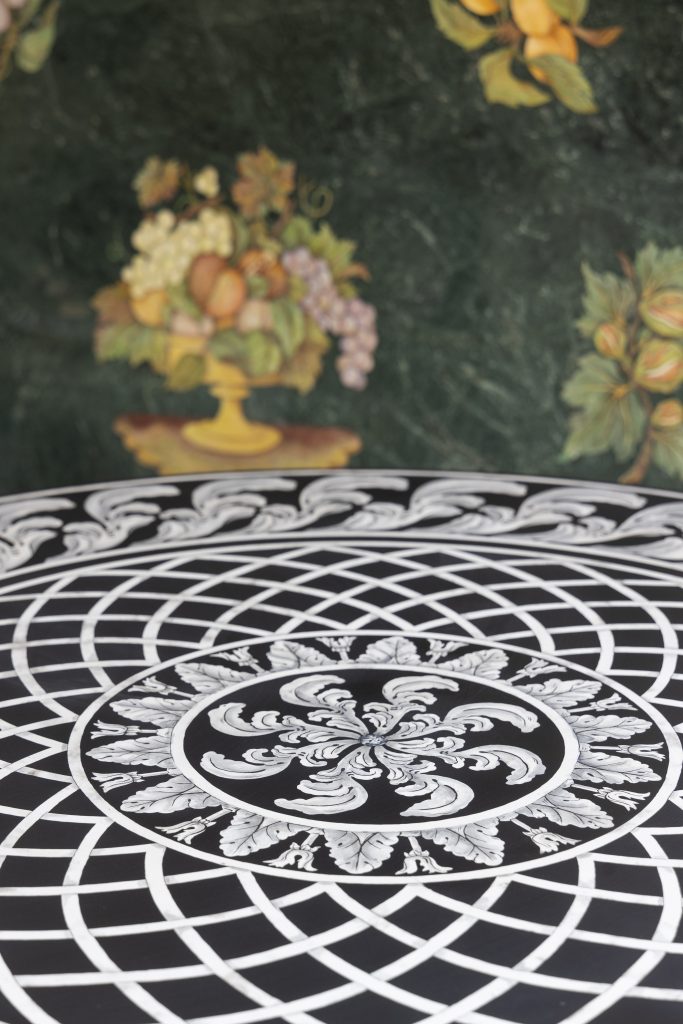
It all starts with an innocent-looking transparent rock originating in the mountains that separate Tuscany from Emilia-Romagna. Selenite, otherwise known as “moonstone” because the Greeks (selḗnē means “moon” in the Hellenic language) believed that the mineral waxed and waned with the lunar cycles, is crushed, cooked and pulverized. The addition of water, glue and natural pigments creates a malleable filler, which is poured into indentations that have been hand hammered and chiseled into slate, stone or even plexiglas surfaces. Alternatively, scagliola (from the Italian, meaning “chips”, as it appears in its original form) can be used to make a stiff, dough-like consistency, enabling clients to customize marble-like features with colours and styles that cannot be found in nature.
Probably Ancient Egyptian in origin before being imported to Ancient Rome, scagliola became prolific in the Emilian town of Carpi in the 1600s before shifting focus to Florence in the 18th century. In the 1730s, as a monk at Vallombrosa Abbey, Florence-born Englishman Enrico Hugford started to apply the technique as an imitation of commesso fiorentino. After exhibiting some of his finished works in Florence’s basilicas, 15 years later he received a commission for two tabletops from British Prime Minister Sir Robert Walpole, which led to a burgeoning in requests for scagliola decorations throughout Europe.
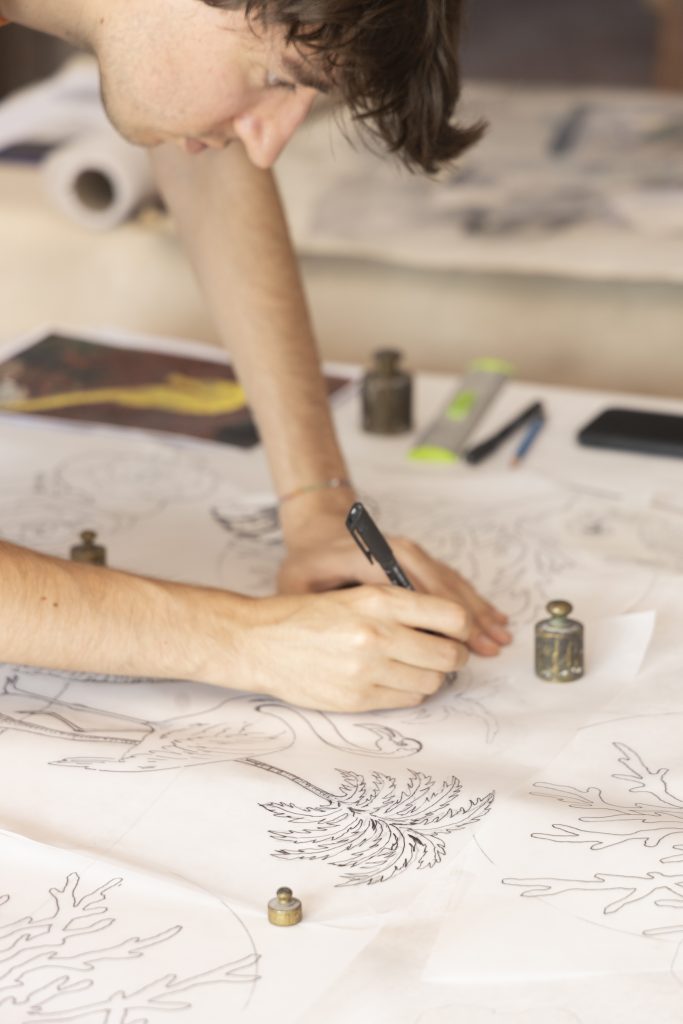
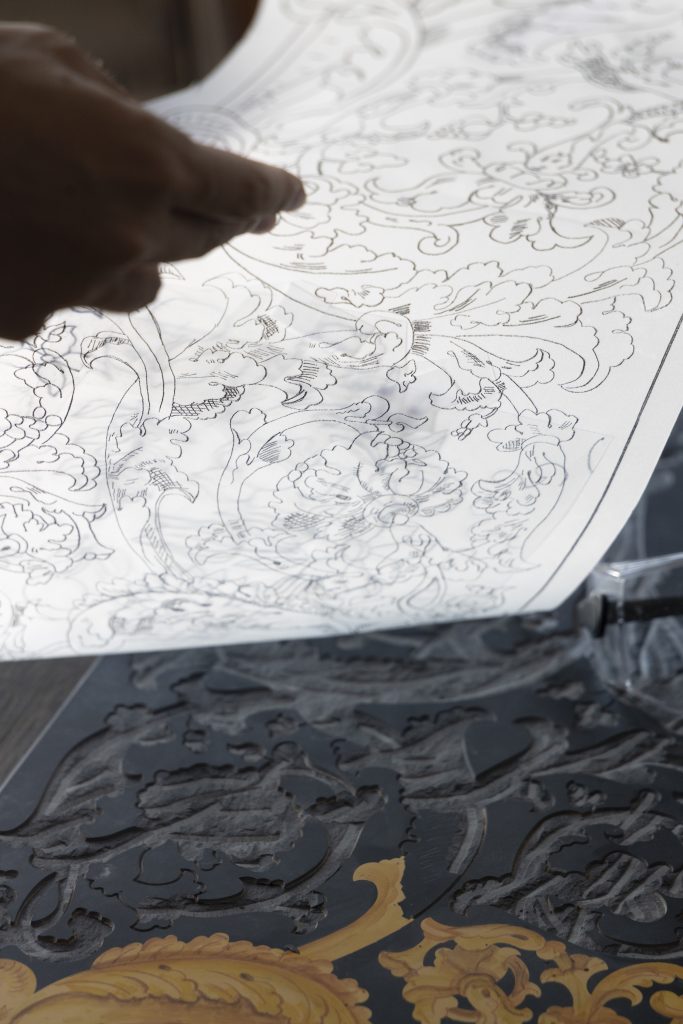
Interest in the style eventually died down in the 19th century and was teetering on the brink of oblivion, had it not been for Bianco Bianchi, who researched the right formula for scagliola mixes in the 1940s. An art-loving office worker, he left the security of his job and dedicated himself full time to producing his own scagliola works as well as collecting and restoring pieces. Many of these antique specimens are on display in the Pontassieve showroom (when they are not loaned out to museums around the world, given the unique gravitas of the collection). An exquisite black-and-white tabletop inlaid with religious iconography, a colourful altarpiece dating to the early 18th-century and fragments of sheer beauty fill the space.
There’s a tale behind one particular counter. One day, the Bianchis received a visit from the Prince and Princess Michael of Kent, who had heard about this decoration, which happened to be in the Bianchi’s Florence apartment at the time. And so, the craftsman brought the royal couple home, only to find nonna cooking lunch in an apron! They were so moved by the artwork (and undoubtedly the earnest experience) that they commissioned a reproduction of the period piece with their coat of arms at the centre instead of the Madonna. The British Royal Family are not alone in their love of Bianco Bianchi’s scagliola. Over the course of a decade, the family fashioned tailor-made adornments for Gianni Versace’s villas in Milan, Rome, Milan and Como. “G. Versace 1987 – 1995/96” is scribed on a folder containing original sketches of a Medusa head designed by Bianco’s son, Alessandro, press cuttings from a spread in Vogue, and photos of the finished tabletop in situ.
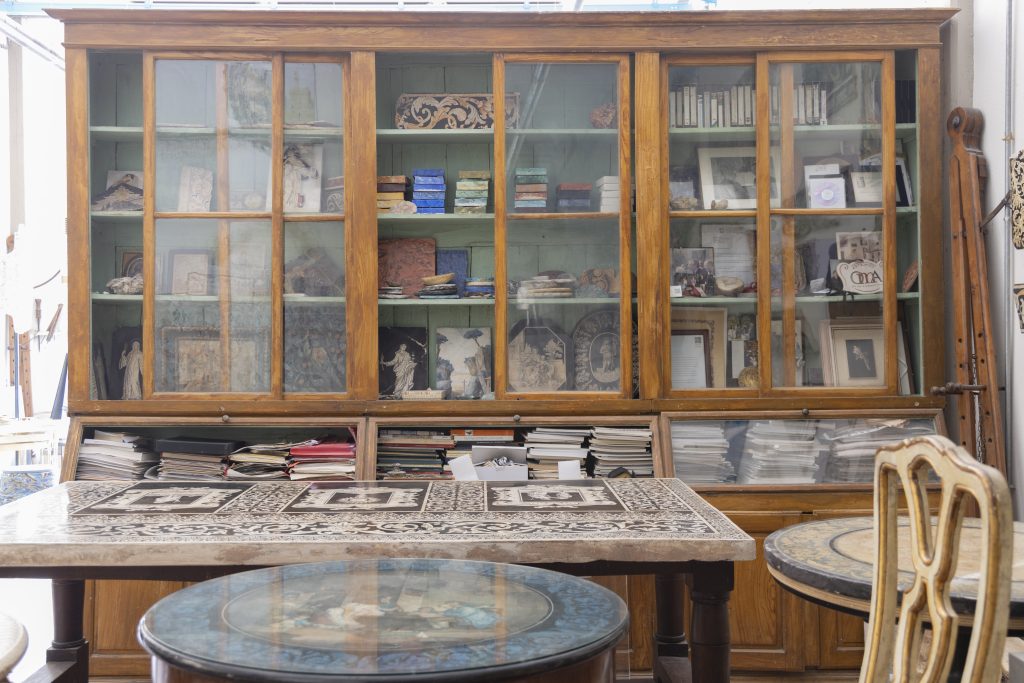
The company remains a family business. Alessandro’s technical expertise and creative flair have been inherited by his 27-year-old son, Leonardo, who exudes passion and pure focus for the craft. A team of four (Leonardo’s aunt, Elisabetta, a mind of knowledge, and an employee also make up the équipe), the skills are transferable, meaning that no piece is made by an individual, but by the bottega as a whole. Hammer and chisel in hand, Leonardo demonstrates how the design is carved into a slate slab, Elisabetta shows how a drawing from the Bianchi archives was customized for a client and Alessandro talks us through the complications of a new wall-mounted design for a Tuscan villa, while another pair of hands are using a pumice stone to file down a surface to perfection.
It’s clear that the new generation is looking to the future. Leonardo has plans to digitalize the family archive to “recognize the legacy that has been handed down to us” and the showroom is dotted with sumptuous contemporary designs, which represent the next frontier of scagliola. A collaboration has already come to fruition with Starhotels’ The Great Beauty award scheme, which resulted in an innovative Bianco Bianchi backlit tabletop bathed in green light that was displayed in the five-star Helvetia & Bristol hotel in Florence. Once a year, the workshop runs an intensive week-long course for aspiring scagliolisti from as far and wide as Australia, New Zealand and Brazil: it’s another way in which the Bianchi family make strides to ensure the future of this exciting artform.
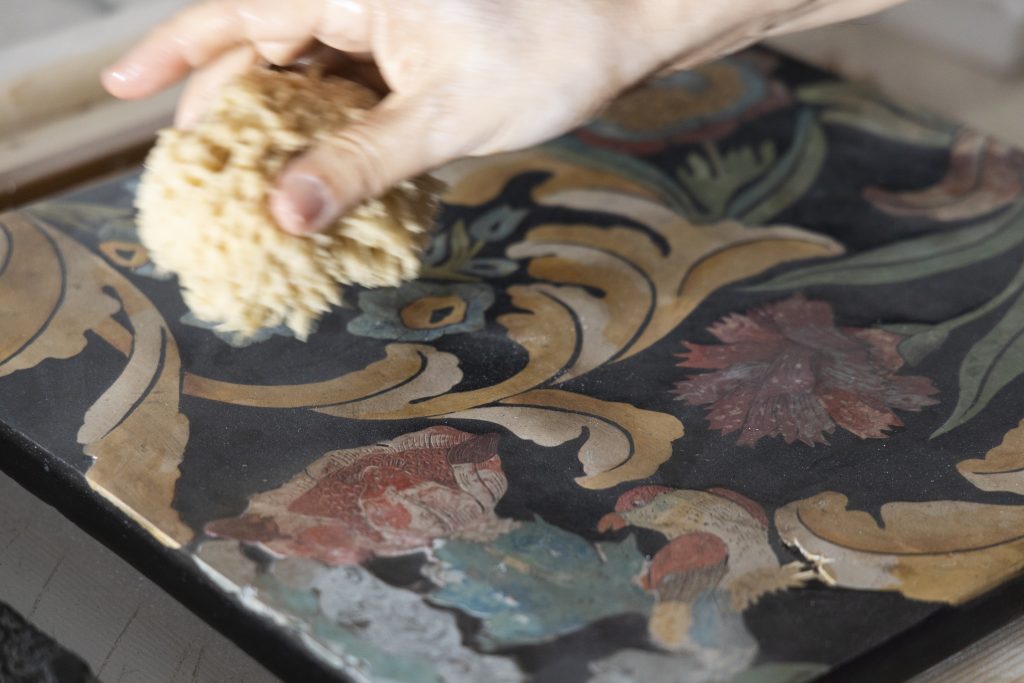
Does Leonardo feel a responsibility in this respect? “When I was younger, I was worried that I wouldn’t be able to do it. But I decided to give it a go, even if I ended up making mistakes. I wanted to try. Now I’ve found my own identity, a totalizing passion.”
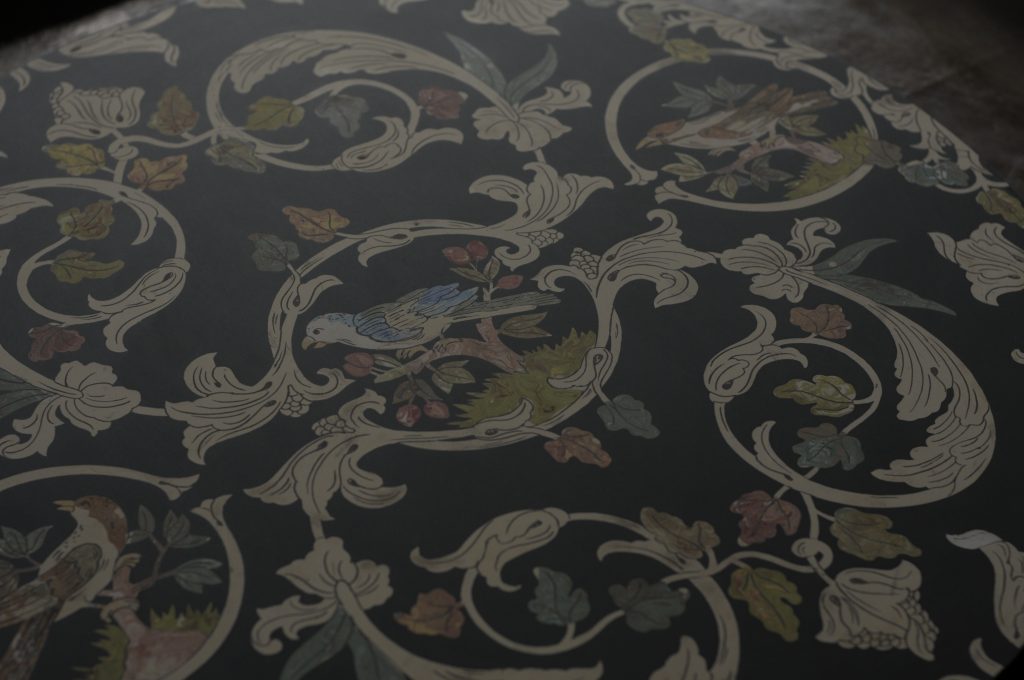
Visit Bianco Bianchi with The Place of Wonders Foundation, whose purpose is to protect, preserve and promote the human heritage of Italian craftsmanship through visits on a donation basis to little-seen artisan workshops. Funds will go towards scholarships to develop future generations of Italian artisans.


